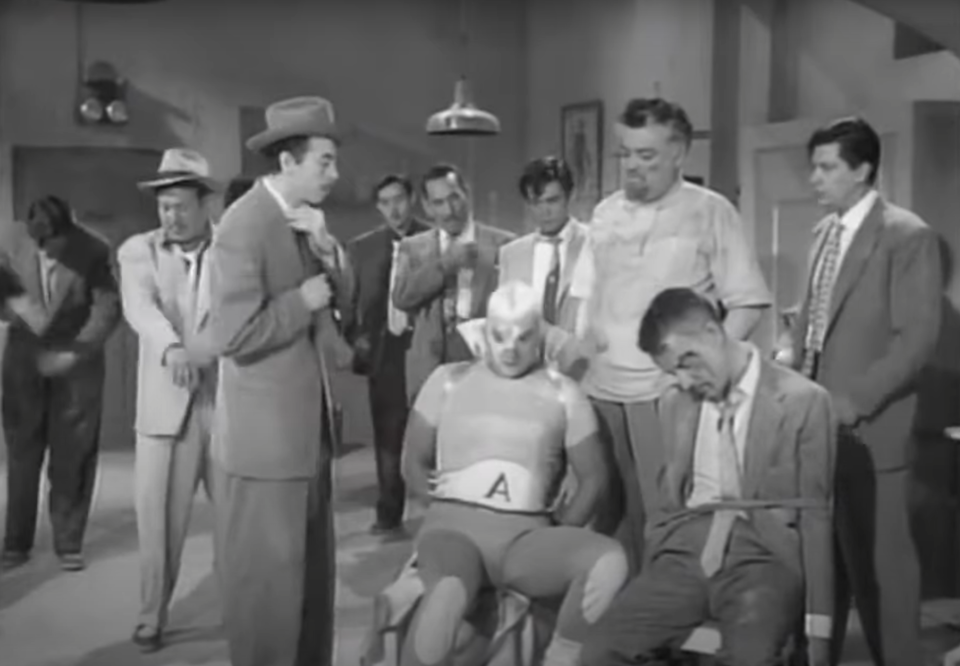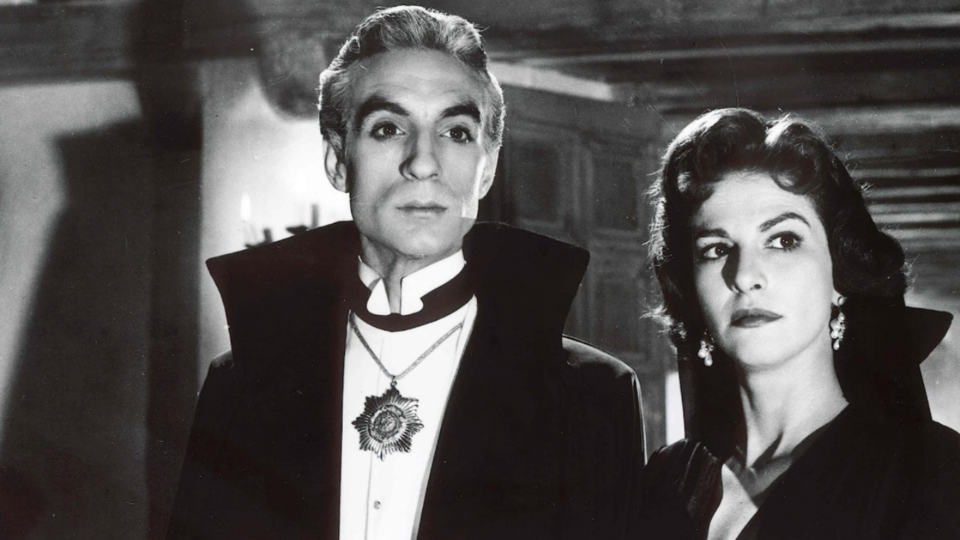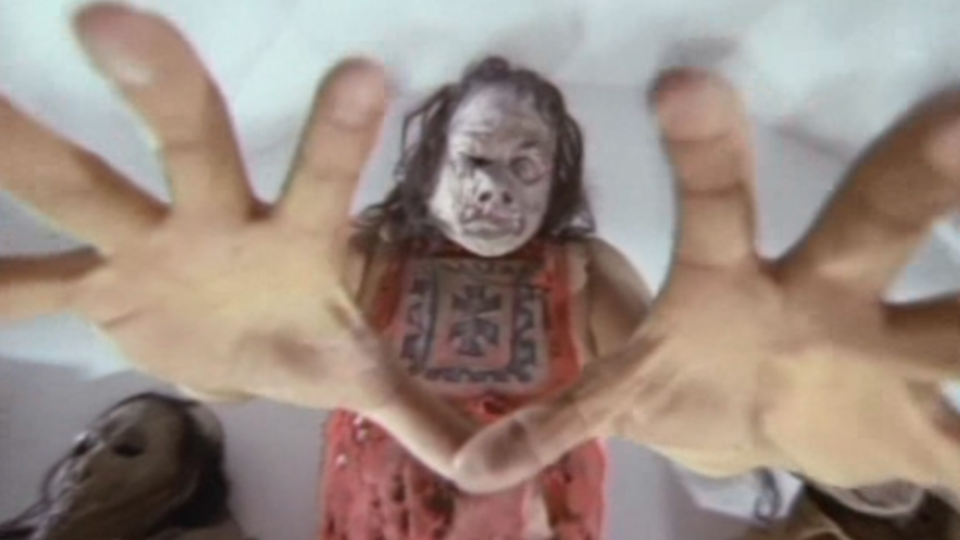10 Mexican Horror Films That Have Shaped The Genre

Mexican horror is always evolving. Its roots can be traced back to the Mexican-American production of Universal’s Dracula. But once Mexico got a hold of the genre, they steered into a different sphere entirely by combining the country’s biggest cultural icon and pastime of lucha libre with their love for the mystical and fantastical. As the country progressed and modernized, so did the state of Mexican horror. The genre began mirroring the unstable political chaos. There are hundreds and hundreds of horror films originating from the country. While each film brings a piece of Mexican culture onto the big screen, these are a list that helped shape the genre. The following is not a ranking but is listed in chronological order from the earliest to the latest entry.
I will be disqualifying Guillermo Del Toro’s Pan’s Labyrinth and The Devil’s Backbone as these are Mexican productions about the Spanish Civil War. Alejandro Jodorwosky’s Mexican era (El Topo, Santa Sangre, Fandis Y Landis, and The Holy Mountain) will not be featured as well. These are Mexican productions directed by a Chilean. Still, I urge seeking these films as each comes with their own charm, style, and importance to Mexican horror cinema.
10. Curse of the Aztec Mummy

The Aztec Mummy series presents many horror tropes still found in contemporary Mexican horror films. Curse of the Aztec Mummy is the second entry into this franchise. The first entry, The Aztec Mummy (1957), can be skipped as the sequel gives a recap of it. The story follows Dr. Eduardo Almada (Raymón Gay) as he tries to save his lover Flor (Rosa Arenas) from her kidnapper.
Although Chano Urueta’s The Magnificent Beast is credited as the first luchador film, The Curse of the Aztec Mummy is considered the first luchador horror film. It introduces the bones of the luchador horror subgenre made famous by real-life luchador-turned-actor El Santo. In this film, we see the use of evil scientists, futuristic gadgets, luchador fighting, tongue-in-cheek performances, hypnotism, and good triumphing over evil.
9. El Vampiro

El Vampiro is the most influential Mexican vampire film to date. Actor Germán Robles was perfect for the role of Count Karol de Lavud. Robles’ multiple encounters with the protagonists Marta (Ariadne Welter) and Dr. Enrique (Abel Salazar) oozes with atmosphere through the film’s magnificent sets. The overall story of El Vampiro can be summarized in one sentence: As Marta returns to her hometown for a funeral, the town’s local tales of vampires turn out to be real. According to author Doyle Green in their book Mexploitation Cinema, the Success of El Vampiro led to the creation of Christopher Lee’s Horror of Dracula (1958) a year later which is credited to jumpstarting the Hammer world of horror films.
8. Macario
Macario is the first Mexican film to be nominated for an Academy Award under the title Best Foreign Film. Although it did not win, the film brought Mexican cinema to many eyes outside of its country. Macario is an adaptation from German novelist B. Traven as well as an iteration of the Faustian tale and another old tale named “Godfather Death”.
What separates this film from other renditions of its influences is the use of the Mexican holiday Día de los Muertos. The holiday is more than a backdrop. It provides the catalyst of the film. Macario (Ignacio López Tarso) is trying his best to make ends meet in 18th-century colonial Mexico. Macario sees the rich placing multiple ready-to-eat turkeys for their respective ofrendas. This gives him the urge to want to eat a whole turkey by himself. Right before indulging in his full turkey, Death appears to him. With a chance to play god, Macario aids the sick with magical water and must choose carefully who to help.
7. Curse of the Crying Woman
La Llorona is arguably the most famous folktale to come out of Mexico. It’s not surprising as the first Mexican horror film La Llorona is based on this story. As Mexican cinema continues onward with plenty of different films inspired by it, The Curse of the Crying Woman is the best Mexican cinematic rendition of La Llorona.
This film isn’t a direct adaptation. Instead, it gathers characteristics of the folktale and turns its story into something truly unique. The film follows Amelia (Rosita Arenas) and her husband Jaime (Abel Salazar) as Selma (Rita Macedo) lures them into her mansion. Selma’s plan is to perform a ritual with Amelia in order to gain immortality and become powerful.
6. The Mummies of Guanajuato

The luchador subgenre of Mexican horror overtook cinema from the early 60s to the late 80s. Due to the television ban of lucha libre in the mid to late 1950s, major luchadores such as El Santo, Blue Demon, and Mil Máscaras took their wrestling skills to the big screens. Now outside of wrestling each other, these famous luchadores and luchadoras also fought vampires, werewolves, Nazis, and other evil beings.
By the 1970s, the luchador subgenre knew exactly what kind of stories it was telling. The Mummies of Guanajuato gives the viewers everything that they were looking for. In the film, mummies come to life and terrorize the city folk. This leads to El Santo teaming up with other real-life luchadores turned actors Blue Demon and Mil Mascaras to bring down the evil at large. The film has scares, good makeup effects, and, of course, plenty of wrestling. This film also marks the first time we see these three major luchadores on screen at the same time.
5. Canoa: A Shameful Memory
The Criterion Collection knows the importance of this film as it is spine #862. In the extras of the disc, directors like Alfonso Cuarón and Guillermo Del Toro explain why this film left an impact on them and the country. While many will not consider this film a horror film, Canoa uses the horror genre to speak on the country’s heated political climate as it depicts the San Miguel Massacre. This is one of Mexico’s controversial incidents and it occurred less than 10 years prior to the release of this film. Guillermo Del Toro explains that as Mexico was leaving the Golden Age of Mexican Cinema, director Cazals blatantly frames the manipulation of religion and the church as the evil entity, something that hadn’t been done up to this point.
4. Poison For The Fairies
This wouldn’t be a Mexican horror list without mentioning one of the best Mexican horror directors: Carlos Enrique Taboada. Even with all the rich horror films leading up to this one, Poison for the Fairies is his masterpiece. The film follows the friendship of two girls, Verónica (Ana Patricio Rojo) and Flavia (Elsa María Gutiérrez). The innocence quickly turns macabre as Veronica tries her best to convince Flavia she is a witch. This is one of the best examples of mixing magical realism and children in horror. The film has the two girls undergo adult themes of murder and manipulation through their young lens.
3. Barbarous Mexico
Barbarous Mexico is an anthology film revolving around Mexico’s traditions and legends told in shocking and disturbing segments. The name alone gives us an idea of what we are about to witness. This anthology introduces emerging horror directors who have now made a name for themselves in contemporary Mexican and horror cinema such as Gigi Saul Geuerro, Issac Ezban, and Jorge Michel Grau. Each of these directors was hand-picked by filmmaker Lex Ortega who also directs a segment. As a warning, each of these segments is pretty extreme, so look up trigger warnings before diving in.
2. Tigers Are Not Afraid
While Emilio Portes’ Belzebuth was the first Mexican Shudder Original film and Issa Lopez’s Tigers Are Not Afraid was the first Mexican Shudder Exclusive, the spotlight is going to the latter. Although the former is still worth a watch. My reasoning for picking Lopez’s film is because of how she depicts the cartel in a mature manner. The film follows Estrella, who goes home to find her mother missing. On the search to find her, Estrella bands together with other forgotten children. They try their best to survive the town run by crooked politicians and the cartel.
Mexploitation cinema was huge in the 60s and 70s, and was recently brought to America by filmmakers like Robert Rodriguez. While there are serious films revolving around the cartel, leaning into exploitation territory is easy. Mexican and American cinema have used the idea of Narcos and the cartel to showcase drugs and violence. Lopez uses the destruction caused by the cartel as a catalyst for Estrella. Just like in Poison for the Fairies, Lopez manages to weave in a horror atmosphere, fantastical elements, and adult themes through the perspective of little children with her inclusion of the horrifying and realistic depiction of the cartel.
1. Huesera: The Bone Woman
When a film can make a huge commotion within its community in a short time span you know you have a classic on your hands. Michelle Garza Cervera’s Huesera: The Bone Woman is that film. Just months after its release on Shudder, countless people went to the internet to rave about Huesera through personal essays, videos, and so forth. This comes as no surprise as Cervera’s multi-layered narrative is relatable to many. The film follows Valeria (Natalia Solián) and her struggles of becoming a mother. When we first see Valeria on screen, her life appears perfect. She has an active and loving partner Raúl (Alfonso Dual) and their home is almost ready for their first child. Through the progression of the film, we witness Valeria’s sacrifices of an old life resurface. As she begins to come in contact with her past, an evil entity infests her present life.
Categorized:Editorials Horror En Espanol

